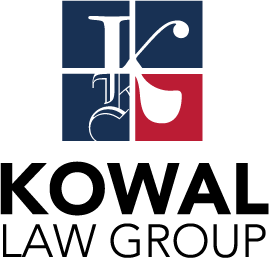Here is another recent opinion in which the Court of Appeal thumbs its nose at the California Rule of Court that prohibits the citing of unpublished opinions for any reason. (Ironically, the Court of Appeal does its nose-thumbing in an unpublished opinion.)
In the hit-and-run personal injury case of Shui v. B.R. & Sons (D2d2 Feb. 25, 2021) No. B299251 (unpublished), the Second District also provides a good illustration for personal-injury plaintiffs how to get key evidence into the record, and how to make a judgment more appeal-proof through the use of jury instructions.
The case also demonstrates how difficult it is to challenge rulings admitting allegedly improper evidence: such challenges not only are subject to wide latitude, but they are easily waived or forfeited, and the plaintiff must also demonstrate prejudice.
In Shui, the driver of a work truck clipped a passenger car on the freeway, causing it to careen out of traffic and into a woman standing behind her car on the freeway's shoulder. The driver drove on.
Defendants strategically stipulated to liability rather than let plaintiff dog them in front of the jury all trial long for committing a hit-and-run.
But plaintiff got the hit-and-run evidence in anyway. How? Plaintiff argued she was aware plaintiff had left the scene, and her awareness contributed to her emotional injuries. The trial court thought that was enough to send the evidence to the jury.
Also at plaintiff's shrewd suggestion, the court instructed the jury that the hit-and-run evidence may only be considered for the "limited purpose" of emotional distress, and not to award any damages "to punish or make an example of" defendants. Plaintiff also avoided suggesting "punishment" during closing argument.
The jury awarded the woman $4 million for her pain and suffering, in addition to $1.3 million for future medical expenses.
Defendants moved for new trial, arguing the $4 million for pain and suffering was excessive, raising the issue over the hit-and-run evidence. The trial court denied the motion.
The Court of Appeal affirmed, finding the trial court did not abuse its discretion in finding the hit-and-run evidence relevant.
Defendants' Expert Challenges Held Forfeited or Frivolous:
Defendants challenged plaintiff's psychologist expert because the expert was not plaintiff's treating physician. The court held this challenge was forfeited because it was not raised in the trial court. The court also held the challenge was frivolous because the law is well-settled that non-treating physicians may testify as experts.
Defendants also raised a Sanchez objection to plaintiff's expert, claiming that the expert impermissibly relayed to the jury what plaintiff had told him, which violates the hearsay rule under People v. Sanchez (2016) 63 Cal.4th 665. The court concluded this claim was also frivolous, as experts may relay "case-specific facts" that are "independently proven by competent evidence" (id. at p. 686), and plaintiff here competently testified at trial to the statements the expert relayed to the jury.
Defendants' Evidence Code § 352 Challenges Rejected:
Defendants also raised five arguments why the hit-and-run evidence ought to have been excluded under Evidence Code section 352. The court rejected all of them, and held even if the trial court erred, any error was not prejudicial to defendants.
This illustrates how difficult the abuse-of-discretion standard is to overcome on evidentiary issues.
Defendants' "Arguably Forfeited" Excessive Damages Argument Rejected:
Moving to defendants' excessive-damages argument, the court first noted defendants "arguably forfeited" the argument "by making no more than a passing reference to it in their motion for new trial."
The court also rejected the argument on the merits, colorfully explaining: "Whether a noneconomic damages award of this size for a significant injury that risked—and still risks—the loss of a limb is closer to the infield or to the outfield wall, the award is still well within the proverbial ballpark."
Reliance on Unpublished Opinions:
Defendants argued that the damages award was "out of whack" with other cases involving crushed limbs. The court analyzed this issue as follows:
"Defendants point to several cases where the noneconomic damages award was substantially less than the $4 million award in this case; plaintiff cites cases where the award was substantially more (e.g., Cobb v. Cty. of L.A. (2019) 2019 Cal.App.Unpub.LEXIS 3084, *3-*6 [award of $9.8 million for past and future noneconomic damages due to crushed foot and leg]). If anything, this exercise in comparison confirms that the award in this case is within—and not beyond—the pale."
The Second District clearly relied upon an unpublished case here. Yet the court made no reference to California Rules of Court 8.1115, the rule stating unpublished cases "must not be cited or relied upon by a court or a party."
But of course, Shui itself is unpublished, so you may not rely upon its example for similarly citing unpublished cases.
This is another installment in a series of posts about ways appellate courts have cited unpublished cases, despite rule 8.1115. These cases might inspire ideas of how, with a little ingenuity, you too might bring up unpublished cases. But there is one thing you can bank on: if ever we find an example of someone being sanctioned for violating 8.1115, the perpetrator will not be an appellate justice. So follow these judges' examples, if at all, with extreme caution.
Tim Kowal helps trial attorneys and clients win their cases and avoid error on appeal. He co-hosts the Cal. Appellate Law Podcast at www.CALPodcast.com, and publishes a newsletter of appellate tips for trial attorneys at www.tvalaw.com/articles. Contact Tim at tkowal@tvalaw.com or (714) 641-1232.

